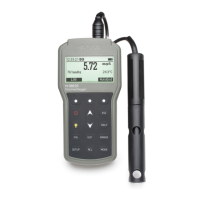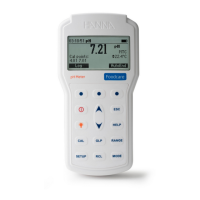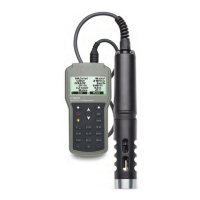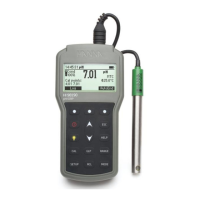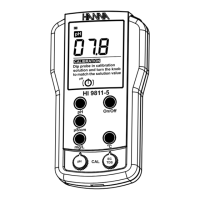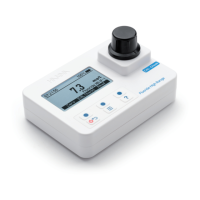45
Note: For a correct conductivity calibration, the probe shield or the calibration beaker must
be used.
The conductivity calibration menu includes 3 different types
of calibration: Conductivity, Absolute conductivity and Salinity.
The “Conductivity” option allows a single point calibration with
a standard solution selectable by the user. This calibration is
temperature compensated.
The “Absolute conductivity” option allows a single point calibration with a conductivity solution of
known non‑temperature compensated value at the current temperature.
The “Salinity” option allows calibration with a standard salinity solution.
The 3 calibrations are related, so that each one will calibrate all 3 measurements.
Note: To improve accuracy, choose a calibration standard near the sample conductivity.
Choose “Conductivity” calibration from the “Calibration” menu, select the calibration type using the
arrow keys and press <Select> to confirm.
Conductivity
• Select the “Conductivity” option and press <Select> to confirm.
• Fill the calibration beaker with a conductivity standard (see Accessories for choosing the proper
Hanna Instruments standard solution).
• Pour additional standard into a second beaker to be used to rinse the sensor.
CONDUCTIVITY CALIBRATION
A conductivity calibration is used to adjust for variations in cell factors by using a standard solution
of known conductivity. Oily coating and biological contaminants are the primary cause of calibration
drift in conductivity sensors. This type of fouling changes the apparent cell geometry, resulting in a
shift in cell constant. Before performing a conductivity calibration inspect the EC sensor for debris or
blockages. The EC electrodes are situated inside the two small channels found in the bottom of the
conductivity sensor. Clean using the small brush from the probe maintenance kit. Flush with water.
A mild detergent may be used to remove oily coatings. Always flush with clean water after cleaning.
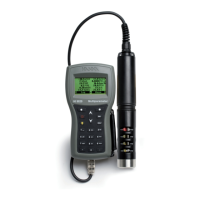
